Birds
Media
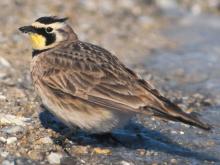
Species Types
Scientific Name
Eremophila alpestris
Description
Horned larks are common in open, plowed crop fields anywhere in Missouri. Their movement against the ground, and their distinctively marked faces and “horns,” can help you see their flocks.
Media
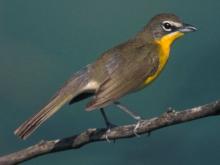
Species Types
Scientific Name
Icteria virens
Description
Our largest warbler, the yellow-breasted chat utters a wide variety of mews, chats, whistles, and stutters. Look for singing males during breeding season. Other times, they hide successfully in brambles and thickets.
Media

Species Types
Scientific Name
Vireo griseus
Description
The white-eyed vireo’s white irises would seem its most distinctive feature, but it’s actually better known for its distinctive, loud, vociferous song.
Media
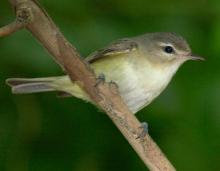
Species Types
Scientific Name
Vireo gilvus
Description
The warbling vireo is a drab little bird with a colorful, brilliant song. It’s a common summer resident. Listen for it in forests, woodlands, and suburbs, especially in large trees near water.
Media

Species Types
Scientific Name
Dolichonyx oryzivorus
Description
The male bobolink is the only North American bird that has light feathers above and dark feathers below. In fall and winter, the male resembles the buffy and brown-streaked female.
Media
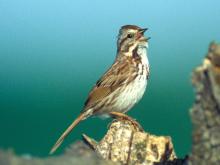
Species Types
Scientific Name
Melospiza melodia
Description
The song sparrow is an uncommon nester but a common winter resident throughout Missouri. You can find the song sparrow along forest edges and in many backyards.
Media
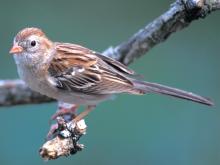
Species Types
Scientific Name
Spizella pusilla
Description
Field sparrows live in weedy, brushy fields, glades, and overgrown pastures. They have a gray head with rusty side stripes on the crown, and a rusty eyeline and cheek. The bill and legs are pink.
Media

Species Types
Scientific Name
Passer montanus
Description
The Eurasian tree sparrow and the house sparrow were brought to America in hopes of controlling insects, but both have become pests. These Old World sparrows are more closely related to birds in the Middle East and India than to our native American sparrows.
Media
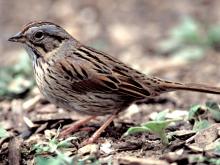
Species Types
Scientific Name
Melospiza lincolnii
Description
Lincoln's sparrow is small and shy, with fine streaks on its breast. In late fall and early spring, look for them along prairie edges and at bird feeders.
Media

Species Types
Scientific Name
Passerculus sandwichensis
Description
Savannah sparrows live in open habitat with nearby dense cover. In Missouri, we see them during migration and winters, but not summers.
See Also







Media

Species Types
Scientific Name
Hemaris diffinis
Description
The snowberry clearwing is a moth that confuses people because it looks like a bumblebee and flies like a hummingbird!
Media

Species Types
Scientific Name
Hyles lineata
Description
The white-lined sphinx moth sometimes confuses people because it flies, hovers, and eats from flowers like a hummingbird. The adults often fly during daylight hours as well as in the night and are often found at lights.
Media

Species Types
Scientific Name
Darapsa myron
Description
The Virginia creeper sphinx moth is common in woods and brushy areas and comes to lights at night. The larvae eat Virginia creeper and grape leaves.
Media

Species Types
Scientific Name
Perimyotis subflavus (formerly Pipistrellus subflavus)
Description
Tri-colored bats, formerly called eastern pipistrelles, are relatively small and look pale yellowish or pale reddish brown. The main hairs are dark gray at the base, broadly banded with yellowish brown, and tipped with dark brown.
Media

Species Types
Scientific Name
Myotis grisescens
Description
Gray myotises are difficult to distinguish from other mouse-eared bats. A key identifying feature of the gray myotis is that its wing is attached to the ankle and not at the base of the toes. It’s an endangered species.
Media

Species Types
Scientific Name
Myotis lucifugus
Description
The little brown myotis (little brown bat) is one of our most common bats, but populations are declining. White-nose syndrome has taken a heavy toll in northeastern states. This species is now listed as vulnerable across its range.
Media

Species Types
Scientific Name
Myotis sodalis
Description
The Indiana myotis, or Indiana bat, summers along streams and rivers in north Missouri, raising its young under the bark of certain trees. It is an endangered species.
About Birds in Missouri
About 350 species of birds are likely to be seen in Missouri, though nearly 400 have been recorded within our borders. Most people know a bird when they see one — it has feathers, wings, and a bill. Birds are warm-blooded, and most species can fly. Many migrate hundreds or thousands of miles. Birds lay hard-shelled eggs (often in a nest), and the parents care for the young. Many communicate with songs and calls.





















